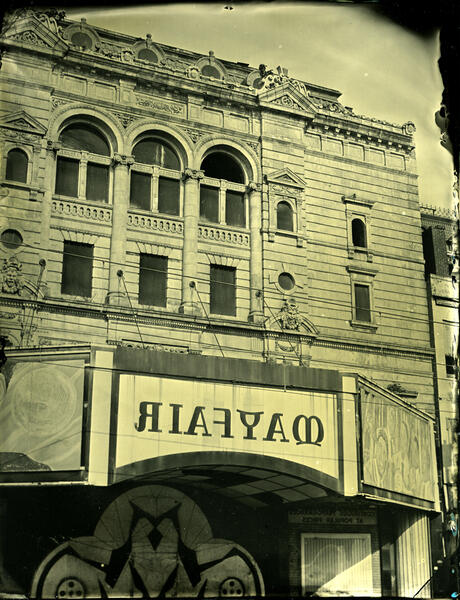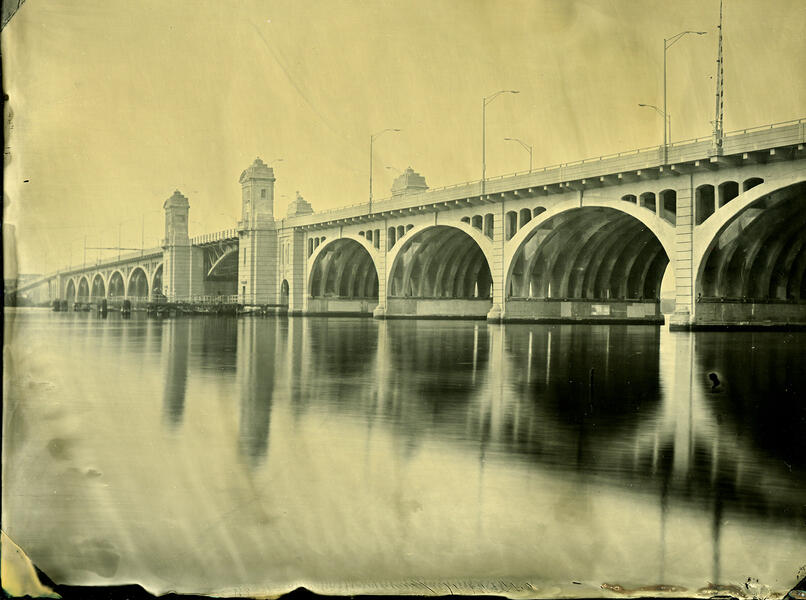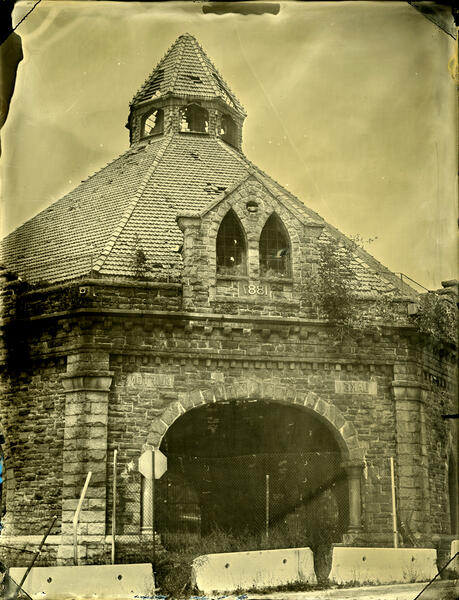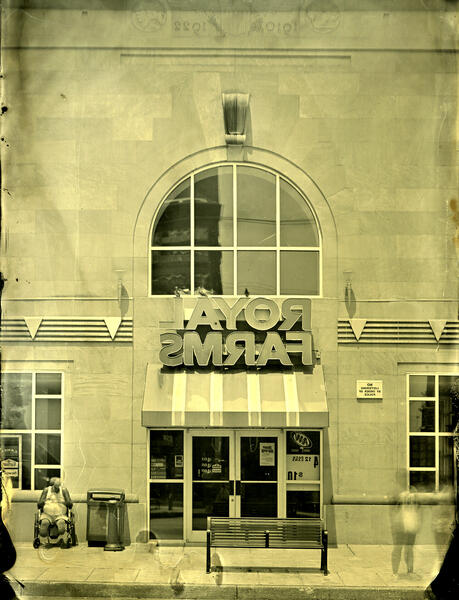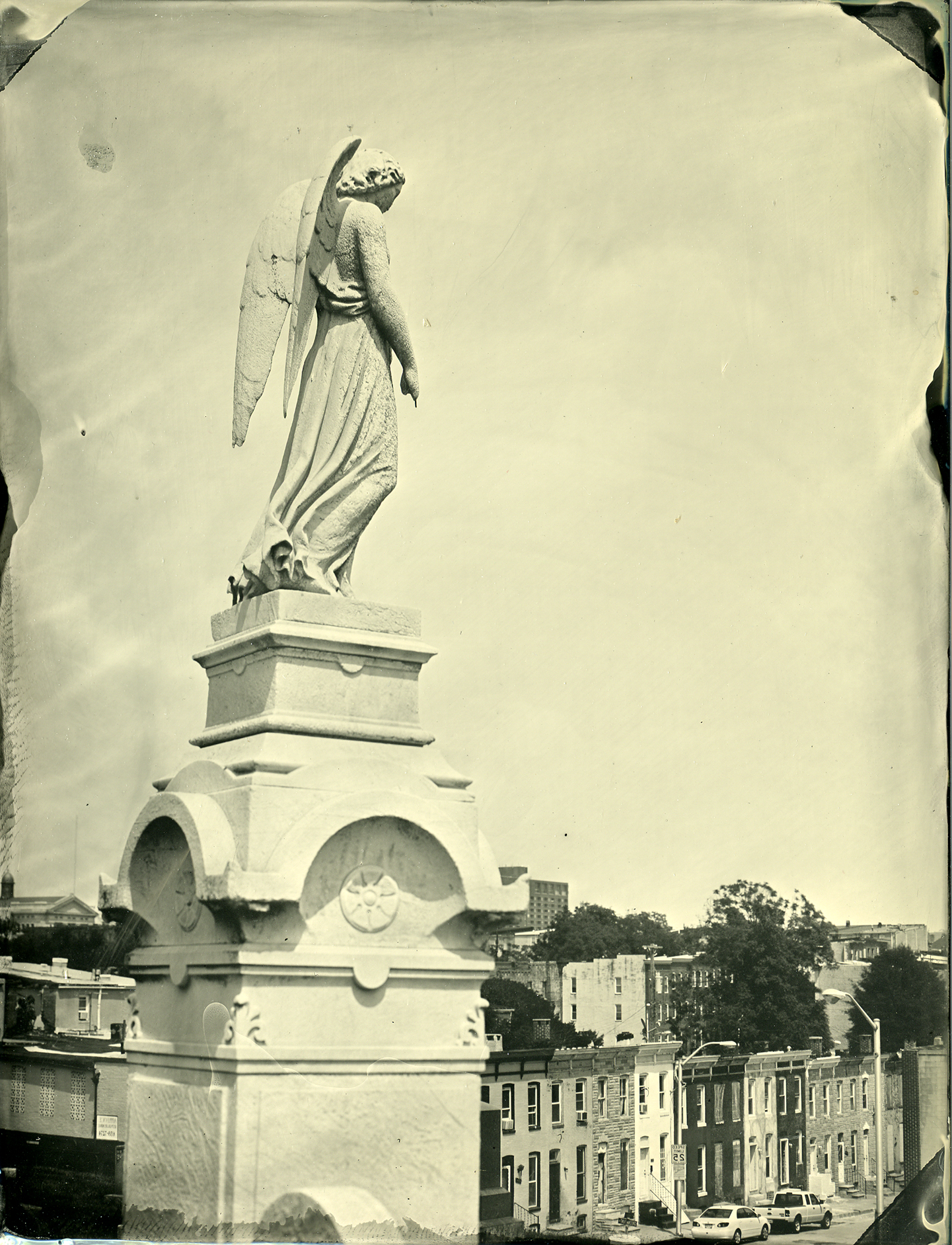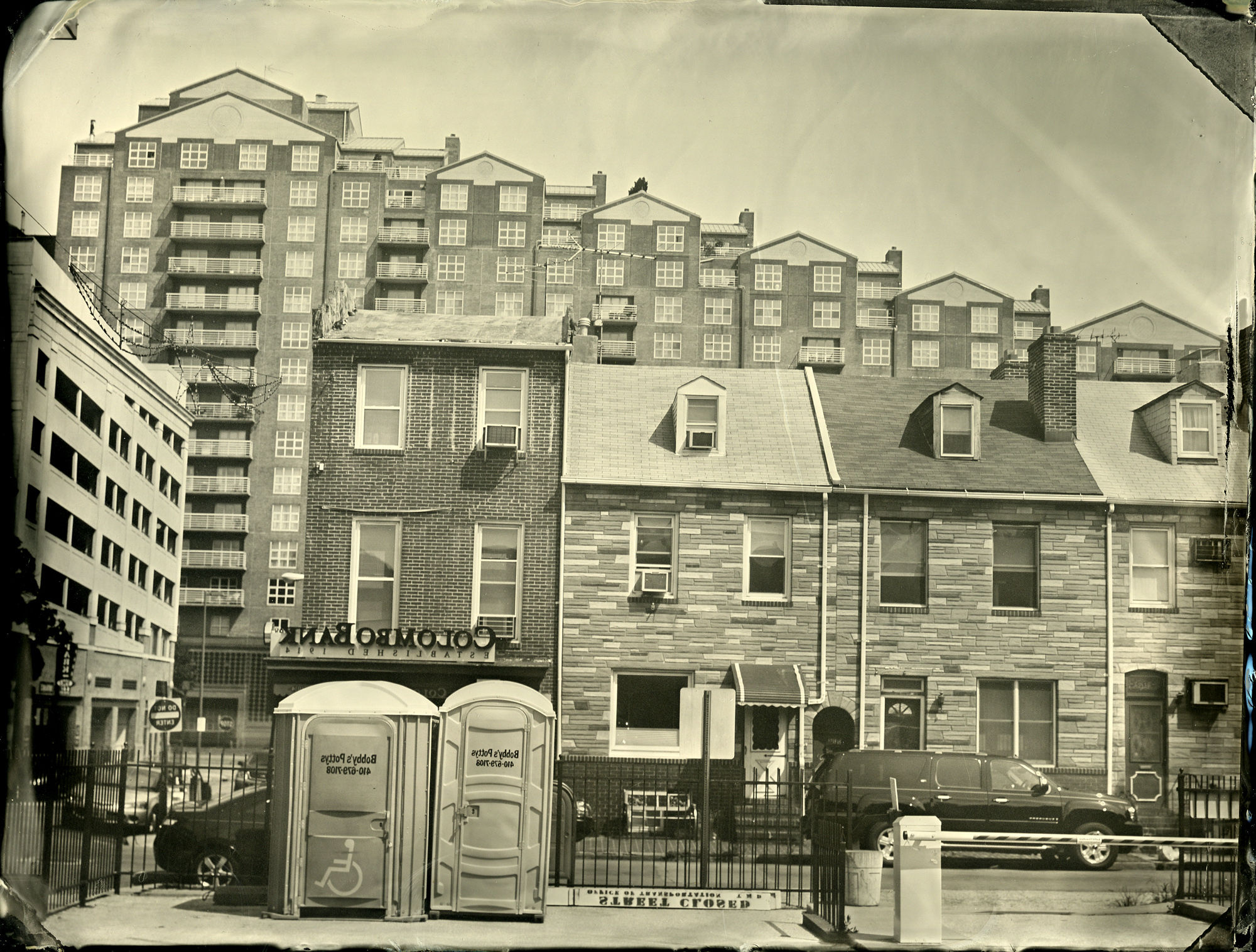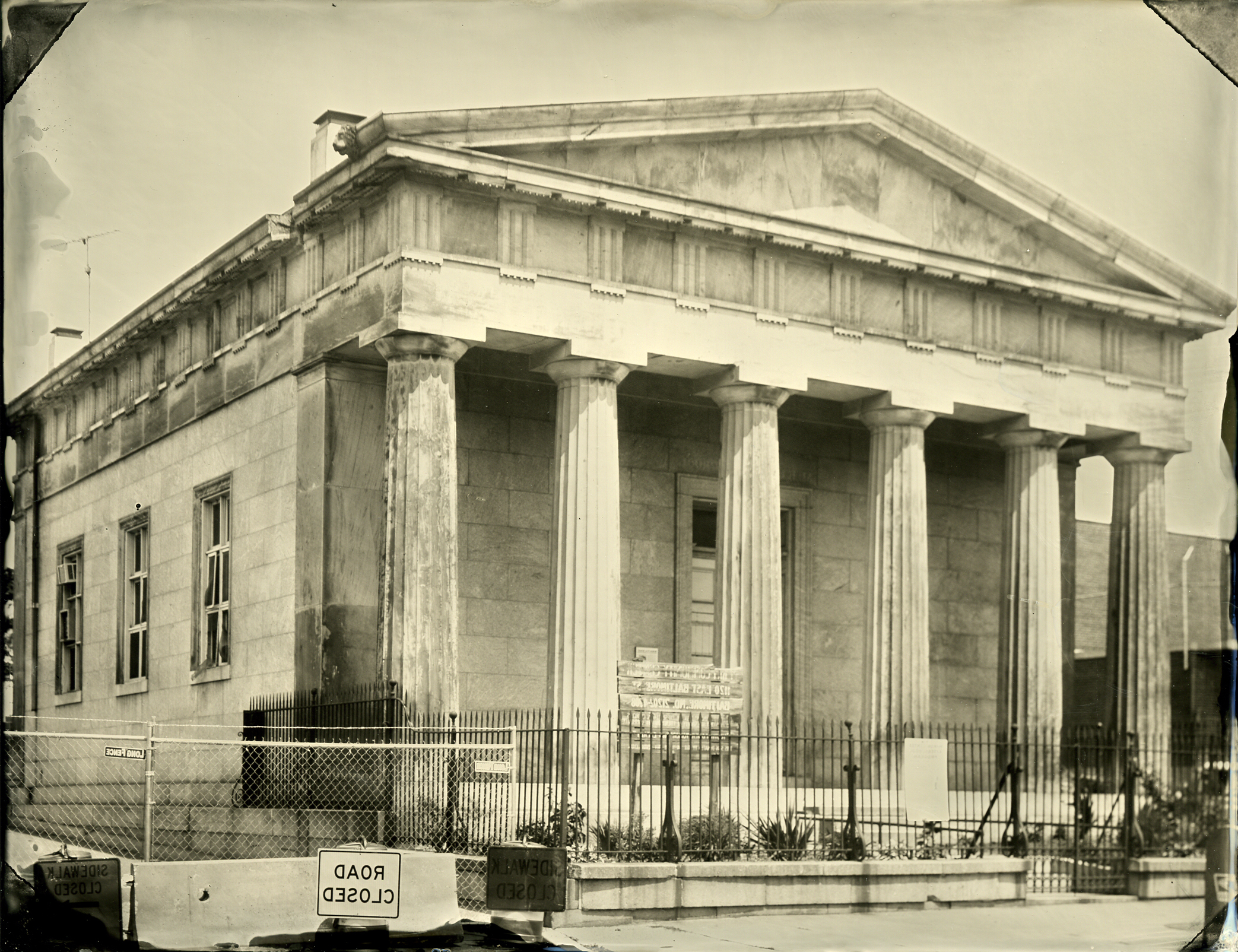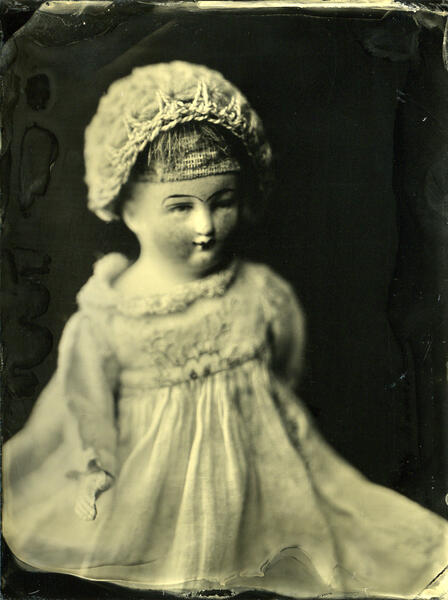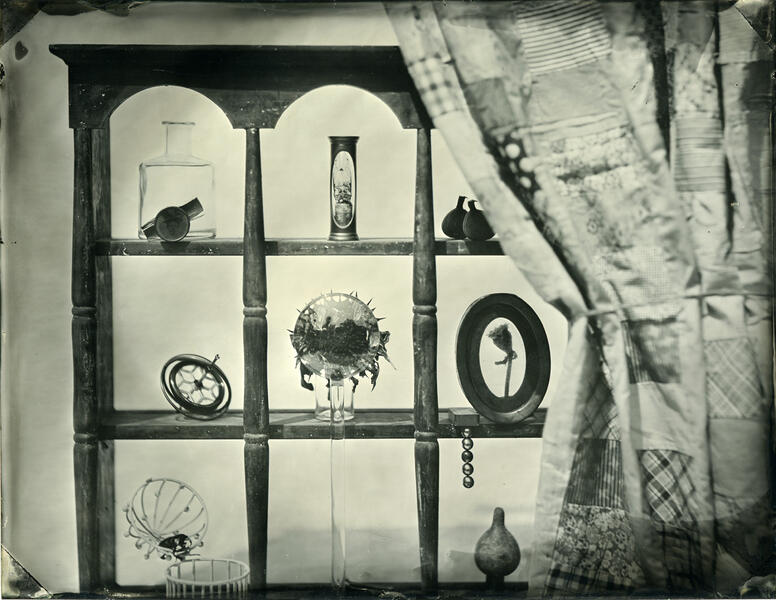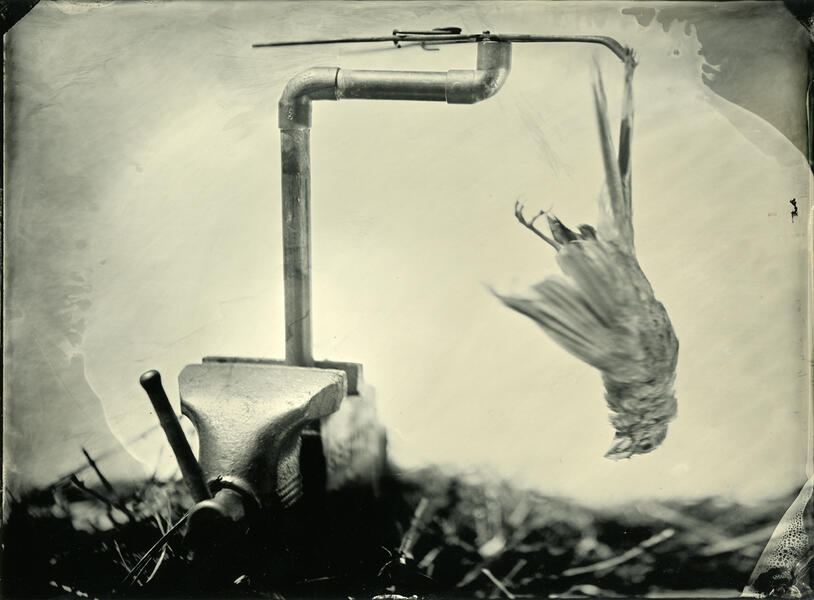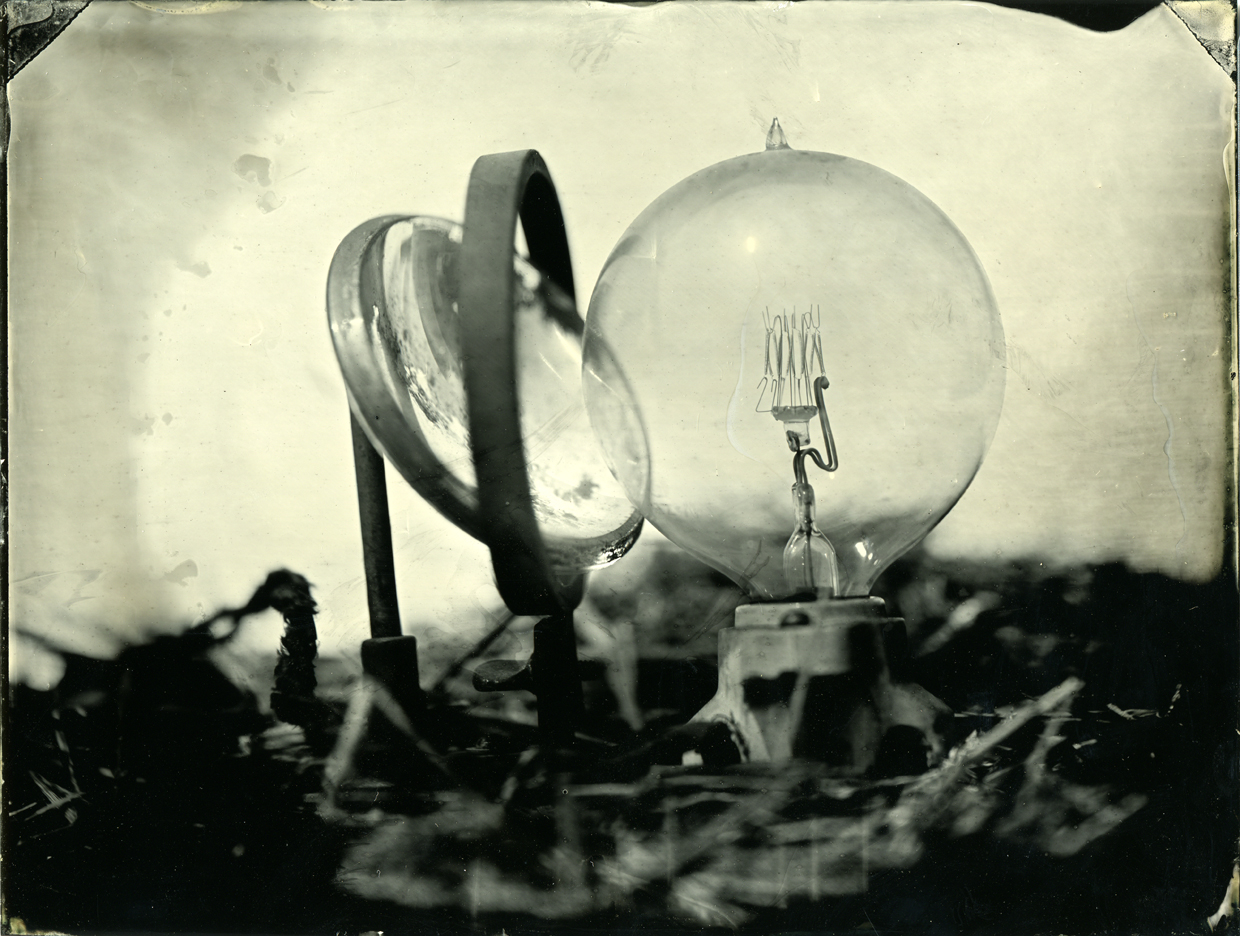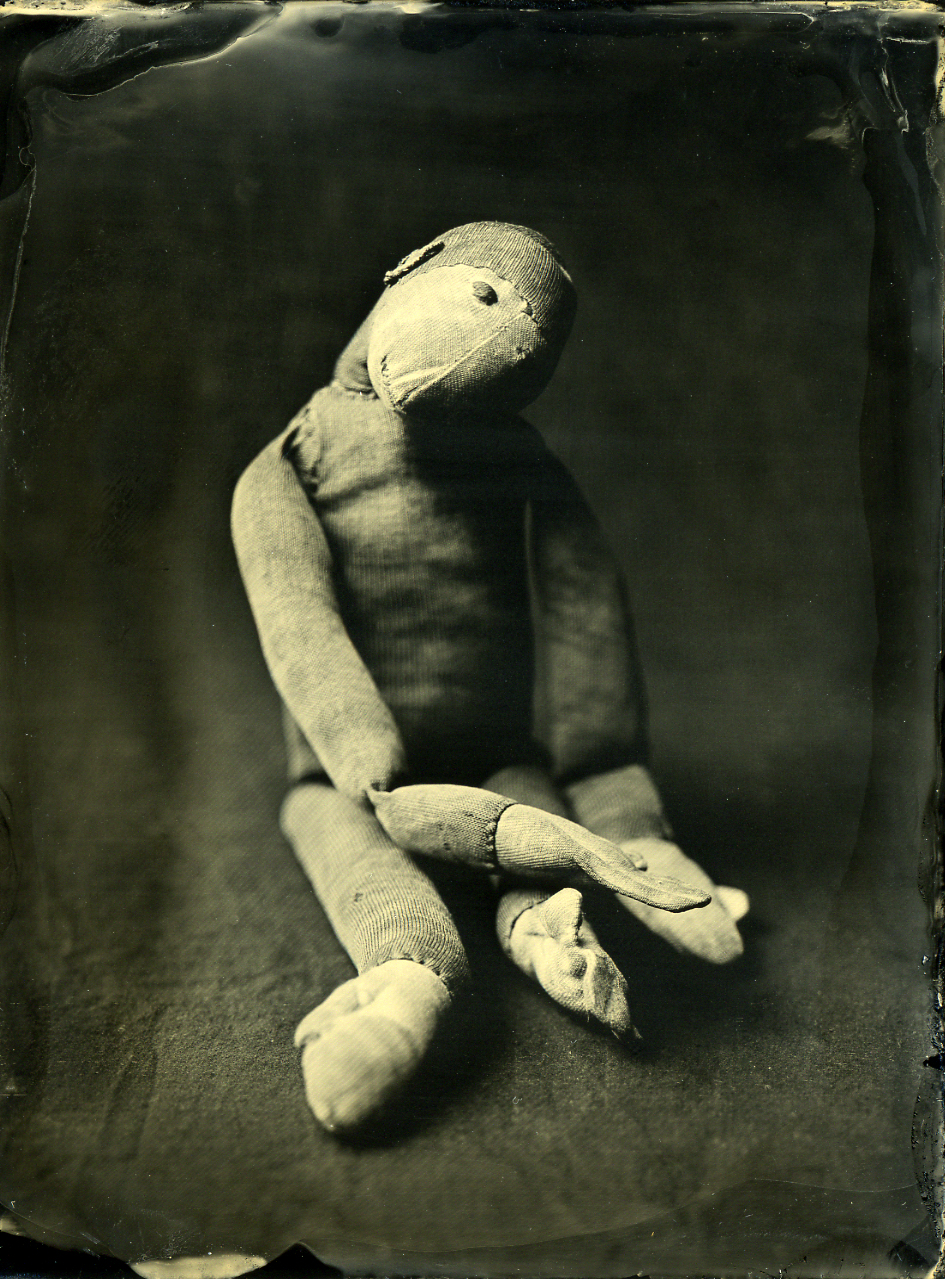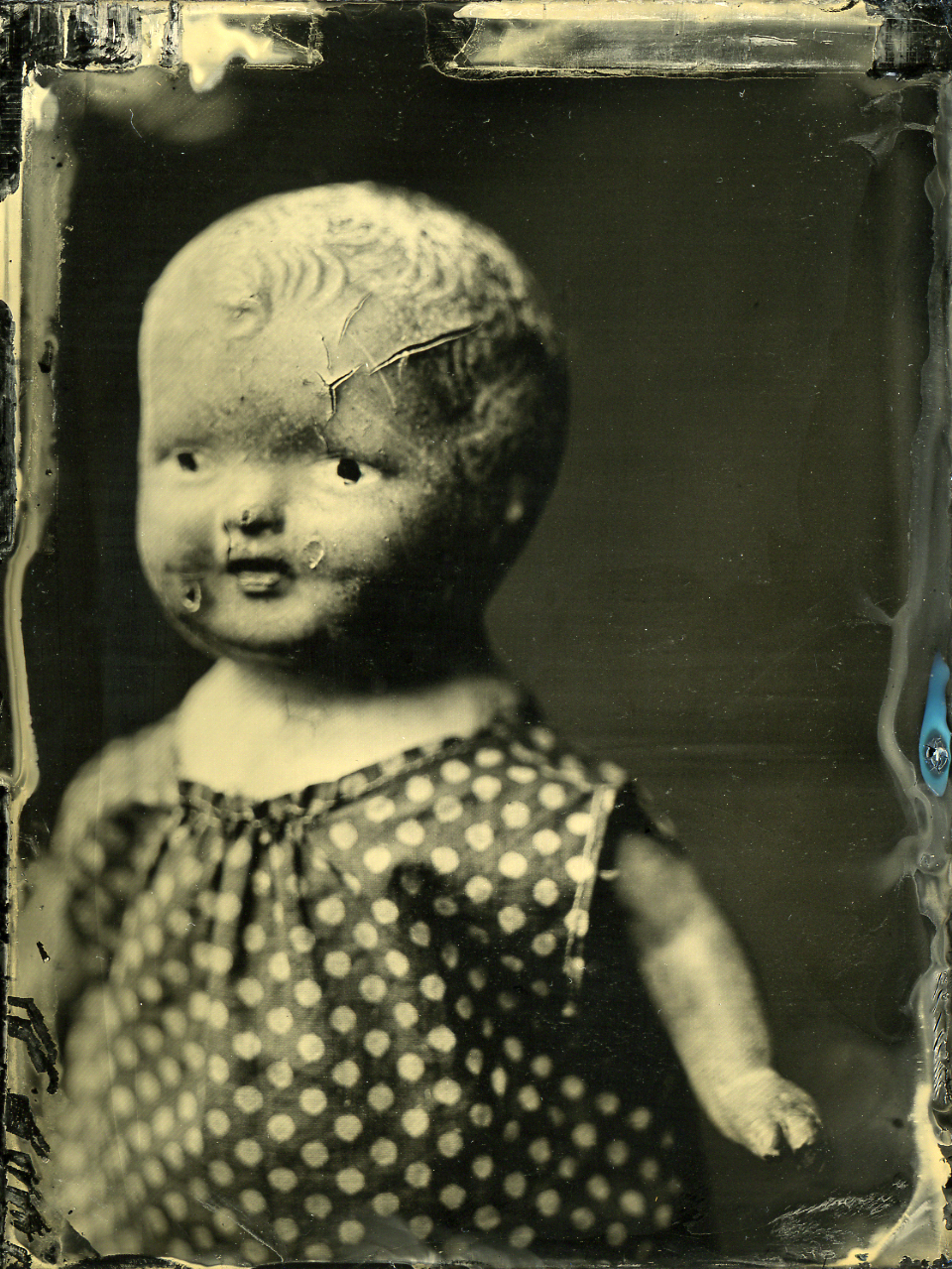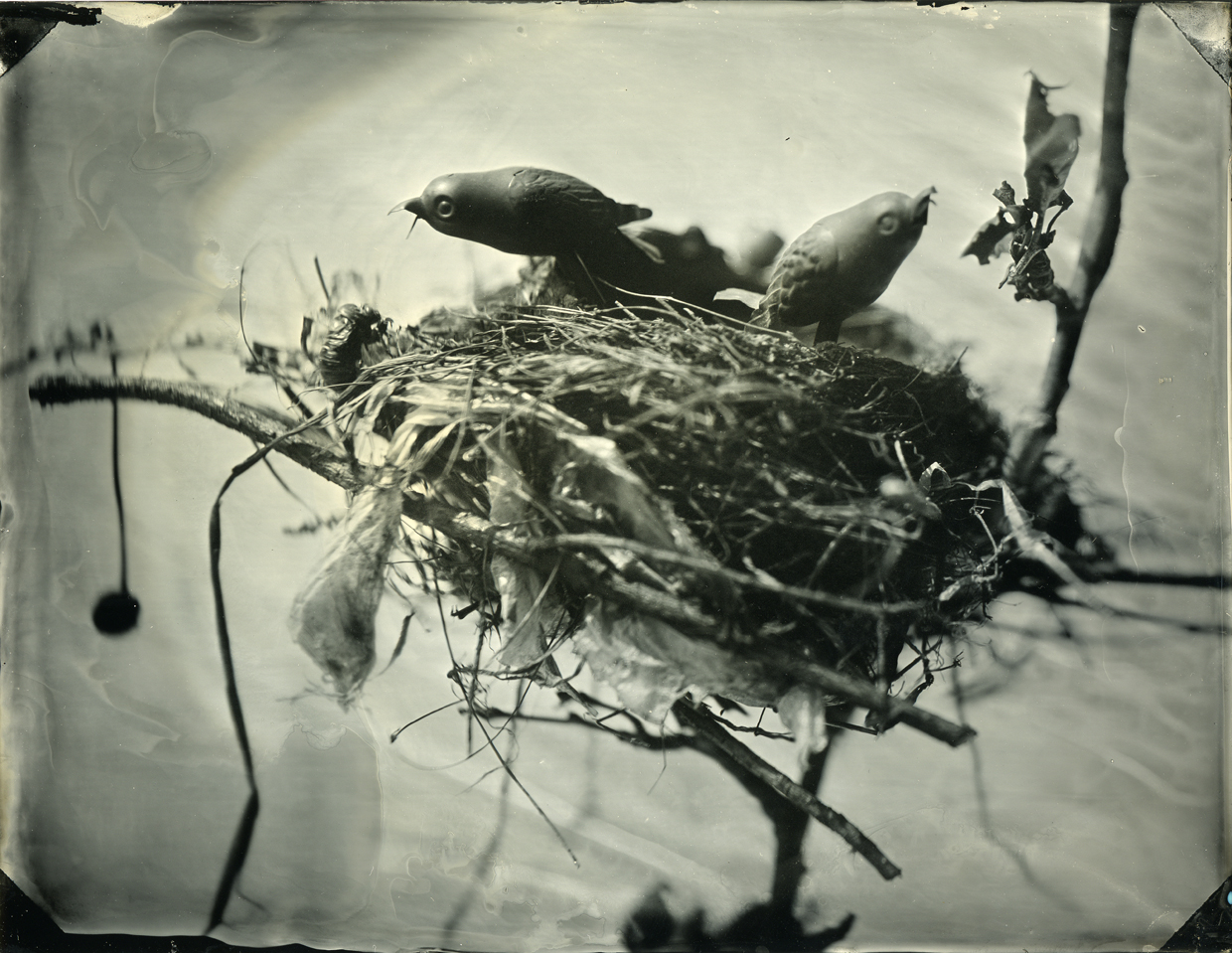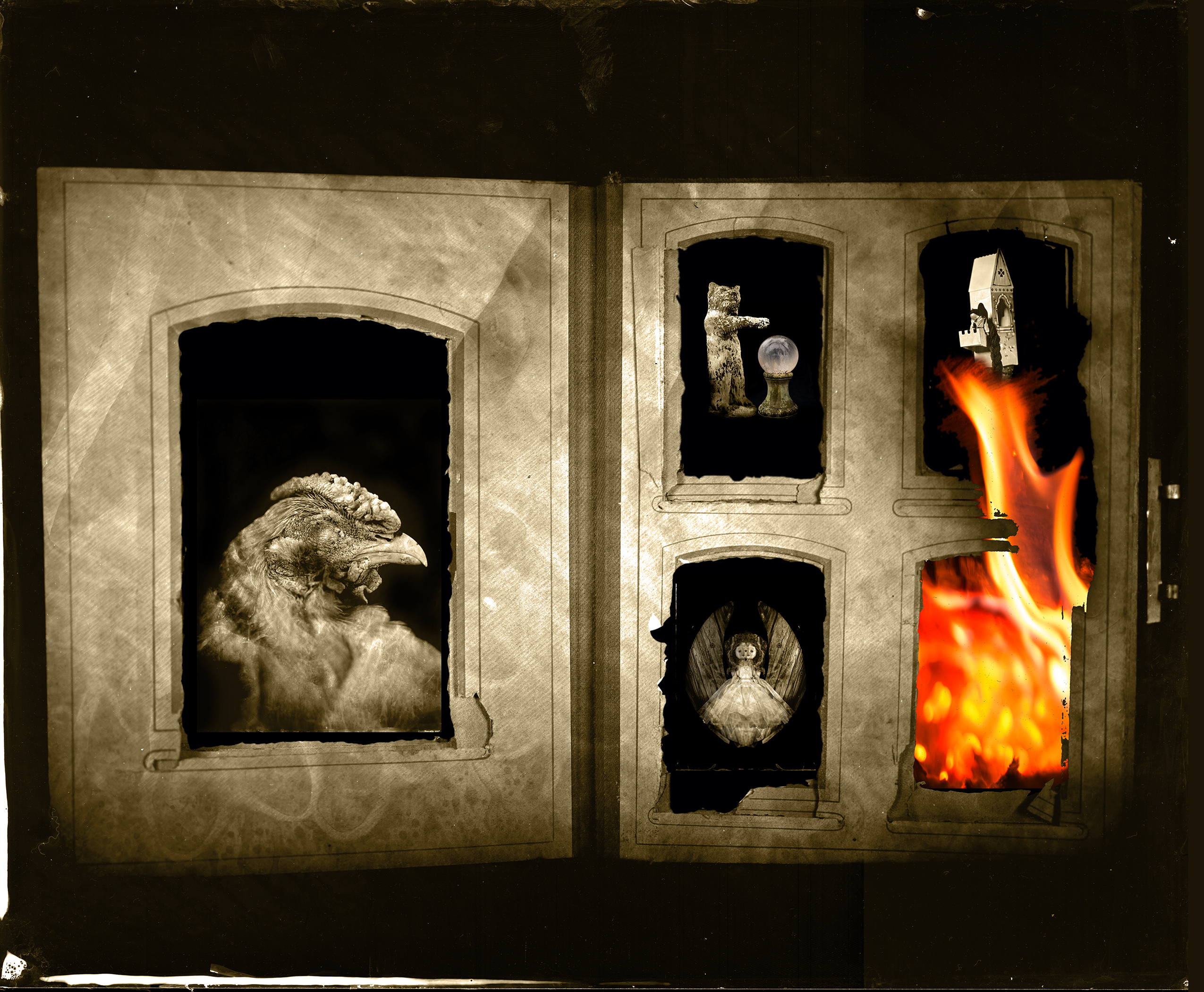About Dan
Baltimore County

Dan Schlapbach received his MFA from Indiana University. He is a Professor of Fine Arts at Loyola University. His work has been exhibited locally and nationwide. Mr. Schlapbach’s research interests include stereo photography, alternative processes, and digital photography. He has received Individual Artist Awards from the Maryland State Arts Council in 2009 and 2011.
Jump to a project:
Baltimore Tintype Urban Landscapes
Important historic structures are crumbling in Baltimore, while insignificant disposable tracts are heaving up from the surrounding landscape. These occurrences reflect our past and present relationship to the urban and rural environments. Jewels of our former society such as the Clifton Park Gazebo and the Greenmount Cemetery Chapel are slipping away and are being replaced by simulacra of the American Dream.
My photographs explore a wide variety of subject matter and settings. I photographed quiet niches of Greenmount Cemetery, chaotic construction on Eutaw Street, and the crumbling grandeur of the Mayfair Theater on Howard Street. The slow, methodic wet-plate process influenced my aesthetic concerns and compositional techniques. Instead of rapid-fire, instantly composed digital photographs, the resulting wet-plate images are more deliberately composed, carefully examining the history, culture and nuances of Baltimore streets and its citizens.
My photographs explore a wide variety of subject matter and settings. I photographed quiet niches of Greenmount Cemetery, chaotic construction on Eutaw Street, and the crumbling grandeur of the Mayfair Theater on Howard Street. The slow, methodic wet-plate process influenced my aesthetic concerns and compositional techniques. Instead of rapid-fire, instantly composed digital photographs, the resulting wet-plate images are more deliberately composed, carefully examining the history, culture and nuances of Baltimore streets and its citizens.
Vespers
These images are a type of photograph called ambrotypes (from Greek ambrotos, “immortal”) and tintypes produced using the wet-plate collodion process. Collodion is a viscous liquid made by dissolving nitrated cotton in a mixture of alcohol and ether. In the mid-19th century, collodion was primarily used by surgeons as a bandage. In 1851, the English photographer Frederick Archer began experimenting with collodion as a medium in which to adhere light-sensitive silver salts to a glass plate. Archer mixed the salts (such as potassium iodide) with the collodion and poured them onto the plate. The prepared plate was then submerged in a solution of silver nitrate. The resulting plate contained a layer of light sensitive silver iodide. Once the collodion hardened, it lost its sensitivity. The plate would therefore need to be exposed and developed ‘wet’ before the collodion dried. Thus, the process became known as Wet-Plate Collodion. This required photographers to carry their darkroom with them wherever they wanted to photograph. Each image is unique and non-reproducible.
Another Time
These relievo ambrotype images merge historical and contemporary practices by blending the 19th-century wet-plate collodion process with 21st-century digital imaging. The relievo ambrotype process is a 19th-century photographic technique that incorporates multiple layers of photographs to create a single image. The foundation of the process is collodion, a viscous liquid made by dissolving nitrated cotton in a mixture of alcohol and ether. I have blended foreground (collodion) and background (digital) images to investigate the relationship between the photograph and its referent by exploring ways to both fix and release the photograph from the object it represents.
In these works, it is often difficult, by design, to discern if the photographs are antique or contemporary. I am collapsing the time difference between these processes, but also challenge photography’s presumed authoritative link between the photograph and the scene depicted. These images explore ways to contemporize and re-present fairy tales, myths and legends.
In these works, it is often difficult, by design, to discern if the photographs are antique or contemporary. I am collapsing the time difference between these processes, but also challenge photography’s presumed authoritative link between the photograph and the scene depicted. These images explore ways to contemporize and re-present fairy tales, myths and legends.
-
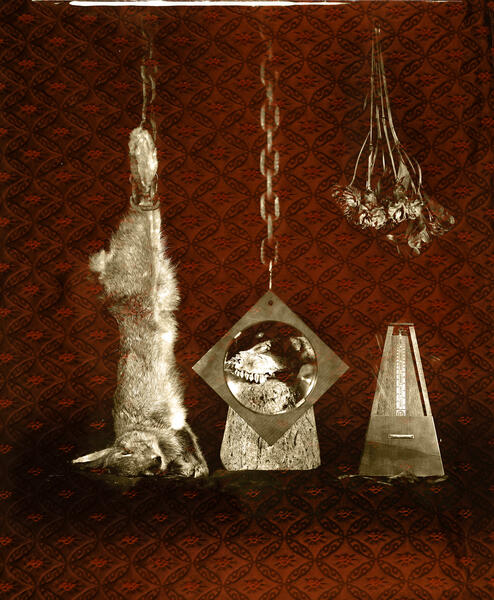 vanitas.jpg
vanitas.jpg -
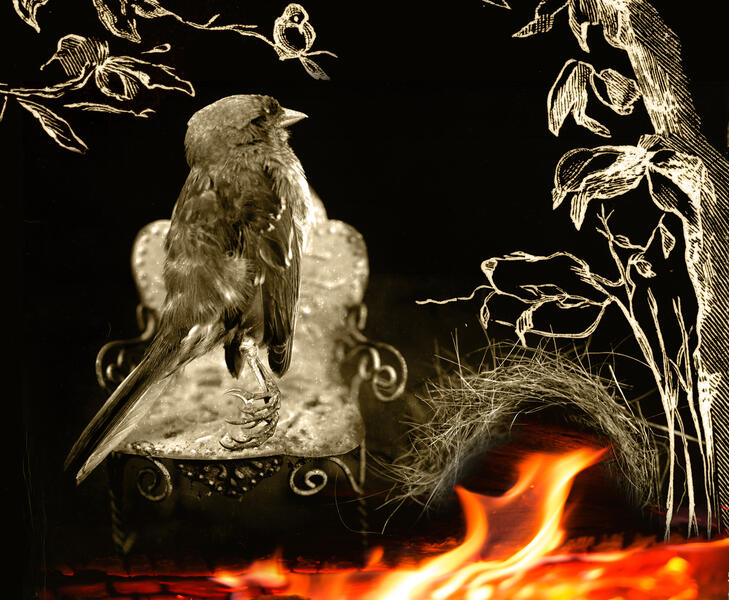 Fly Away HomeRelievo Ambrotype
Fly Away HomeRelievo Ambrotype -
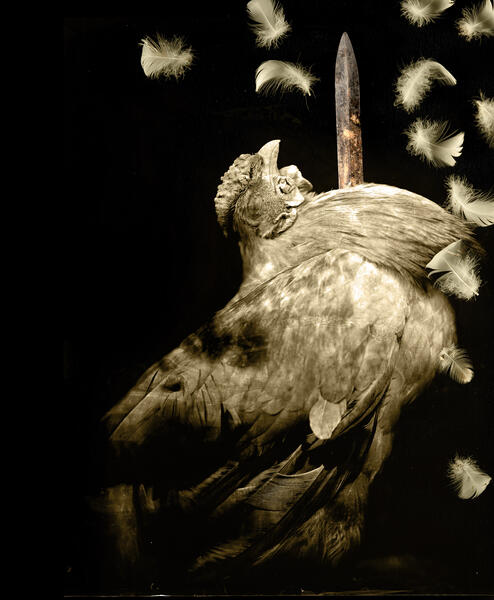 Poultry of Peace (after J.H.)Relievo Ambrotype
Poultry of Peace (after J.H.)Relievo Ambrotype -
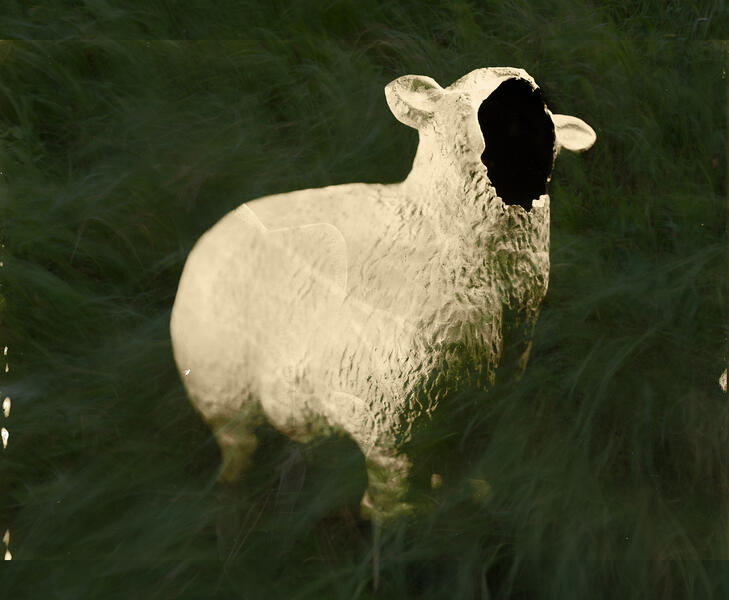 Little LambRelievo Ambrotype
Little LambRelievo Ambrotype -
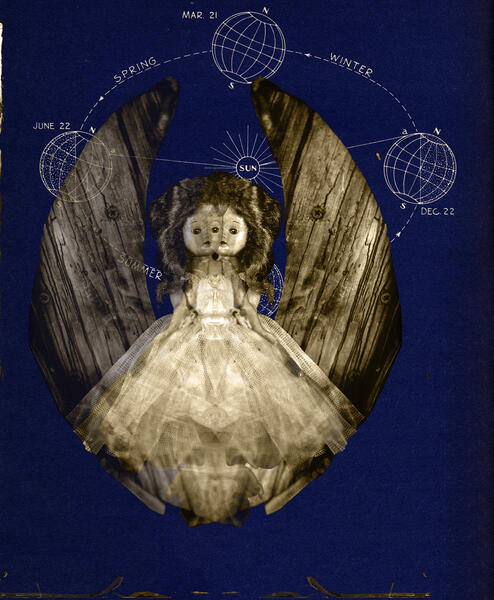 Causes for the SeasonRelievo Ambrotype
Causes for the SeasonRelievo Ambrotype -
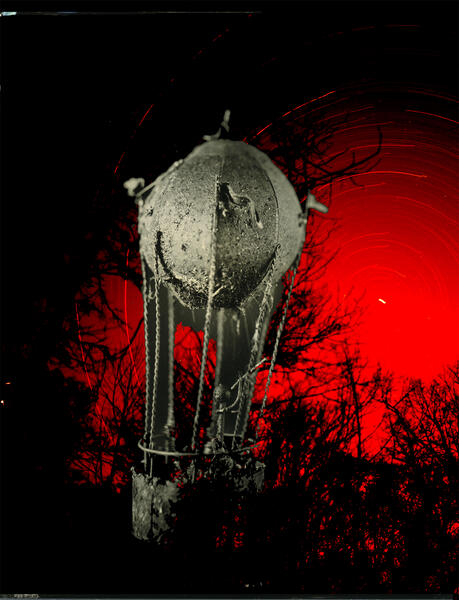 ReckoningRelievo Ambrotype
ReckoningRelievo Ambrotype -
 Watcher of the SkiesRelievo Ambrotype
Watcher of the SkiesRelievo Ambrotype -
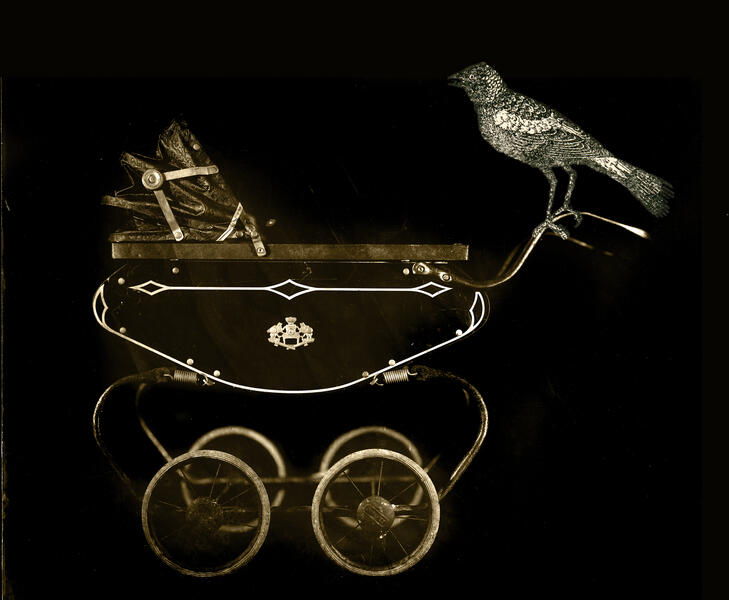 The HostRelievo Ambrotype
The HostRelievo Ambrotype -
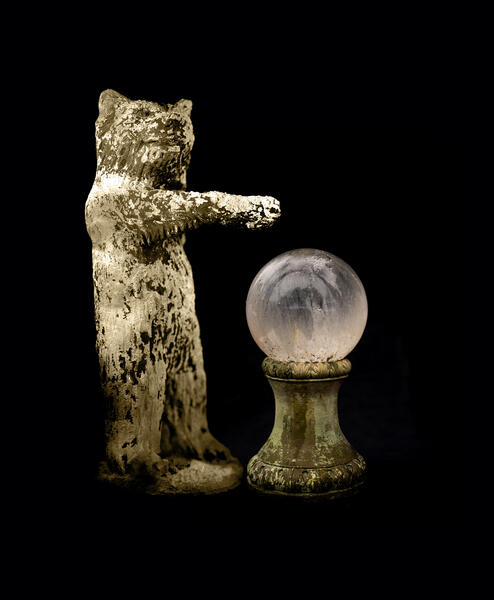 The DivinerRelievo Ambrotype
The DivinerRelievo Ambrotype -
 The Index of IlluminationsRelievo Ambrotype
The Index of IlluminationsRelievo Ambrotype

